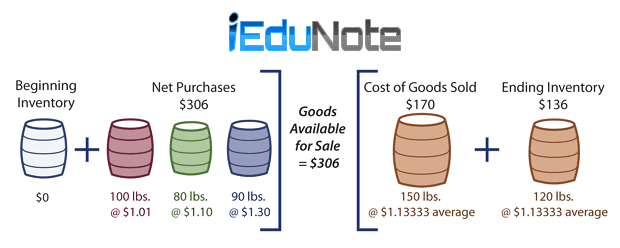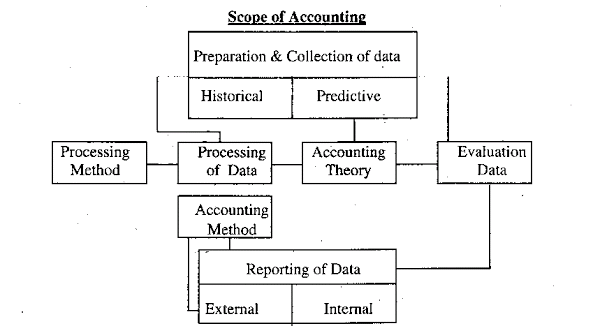The weighted average method is suitably applicable to that firm, which deals with goods of equal importance.
According to the weighted average method, each unit of inventory of a particular type is similar and can be sold for the same price.
Units of equal economic importance are assigned equal costs.
The weighted average method differing from LIFO or FIFO assigns an equal cost to each unit, whether sold or unsold.
Under this method, the unit cost is taken to be the weighted average cost of all goods ready for sale during a particular period.
The weighted average cost per unit is applied in calculating the cost of closing or ending inventory, as well as the cost of goods sold.
| The weighted average cost per unit of goods available = Total Cost of All Units available for Sale/ Total Units Available for sale. |
So, according to our information; $48,000/2000 units=$24.
The cost of ending inventory: 900 X $24 = $21,600.
And the cost of goods sold is $26,400(48000-21600).
Features of Weighted average Method
- In the calculation of costs of Ending inventory, the same unit costs – the weighted average cost per unit; are assigned to units not sold and to units sold.
- In the calculation of the cost of goods sold, the same unit costs – the weighted average cost per unit; are assigned to units sold and unsold.
Advantages of Weighted average Method
- Assigns an equal unit cost to each unit of inventory.
- It does not produce widely fluctuating profits when inventory costs are fluctuating, as FIFO and LIFO do.
Disadvantages of Weighted average Method
- It does not match recent costs with current revenue, as well as LIFO, does.
- It does not produce an ending inventory amount that contains costs as recent as those included under.

